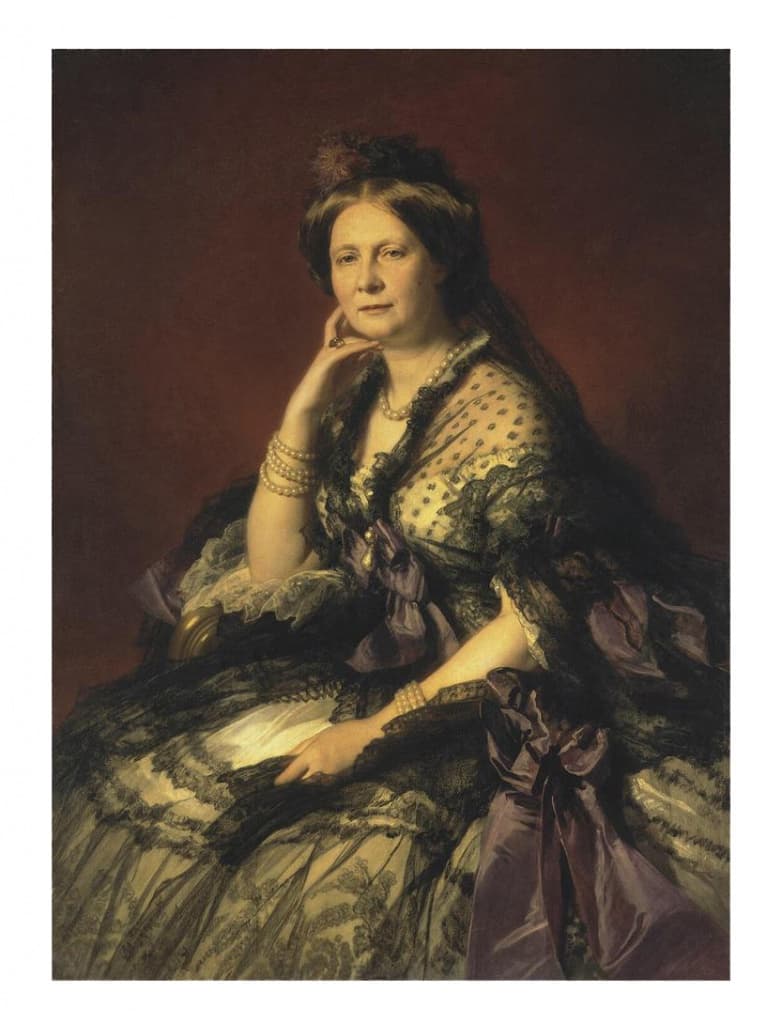The hospital complex on the Fontanka Embankment, near the Staro-Kalinkin Bridge, traces its history to 1860-1861. It was during these years that the Exaltation of the Holy Cross Community of Sisters of Mercy opened a hospital for women on the Community premises in this location. The hospital contained 16 inpatient beds, an outpatient clinic and a pharmacy for low-income patients.

In October 1854, shortly after the start of the Crimean War, Grand Duchess Elena Pavlovna of Russia established the Exaltation of the Holy Cross Community of Sisters of Mercy to organise intensive training for nurses who would care for the wounded and sick soldiers. The Sisters of Mercy of the Holy Cross were sent to the battlefront of the Crimean War. Their services were highly appreciated by contemporaries.
 The members of the Holy Cross Community of Sisters of Mercy continued their nursing services after the Crimean War. They carried out extensive work delivering health care to the population of the city outskirts. At the same time, the main goal of the Community remained the training of nursing staff for military hospitals. The establishment of the Holy Cross Community of Sisters of Mercy in St Petersburg was encouraged and promoted by the famous Russian surgeon Nikolay Pirogov, who set up standards and fundamental guiding principles for the Community action.
The members of the Holy Cross Community of Sisters of Mercy continued their nursing services after the Crimean War. They carried out extensive work delivering health care to the population of the city outskirts. At the same time, the main goal of the Community remained the training of nursing staff for military hospitals. The establishment of the Holy Cross Community of Sisters of Mercy in St Petersburg was encouraged and promoted by the famous Russian surgeon Nikolay Pirogov, who set up standards and fundamental guiding principles for the Community action.
In 1918, the property of the Holy Cross Community of Sisters of Mercy was nationalised. The hospital was transformed into a city hospital under the Petrograd Health Insurance Fund. Many generations of the residents of Petrograd and later Leningrad knew the former hospital of the Holy Cross Community as the Chudnovsky hospital. Initially, it was a city hospital and later it became a hospital under departmental affiliation. The Baltic Basin Central Clinical Hospital was well known far beyond St Petersburg by its strong and credible professional reputation as a health care provider.
For many years, the hospital provided medical care and treatment to marine and river industries’ employees. In 2002, the Baltic Basin Central Clinical Hospital was transformed into the Federal State Institution ‘North-Western District Medical Centre for the Federal Agency of Health and Social Development’. Then, in 2011, the Medical Centre was reorganised into the St Petersburg Clinical Complex of the Federal State Budgetary Institution ‘Pirogov National Medical and Surgical Centre’ of the Ministry of Health of the Russian Federation’.
In 2015, due to reorganisation, the Centre was renamed into the Federal State Institution ‘St Petersburg Multidisciplinary Medical Centre’ of the Ministry of Health of the Russian Federation. These changes took place pursuant to Decree of the Government of the Russian Federation No 184-r as of 10 February 2015 and Order of the Ministry of Health of the Russian Federation No 59a as of 17 February 2015.
On 1 January 2018, following the integration with St Petersburg University, the Centre was renamed into the Federal State Budgetary Educational Institution of Higher Education ‘Saint Petersburg State University Hospital (inpatient and outpatient departments)’.
Since then and up to the present, the institution has been the Hospital of St Petersburg University. This is a multidisciplinary medical institution that provides high-tech medical care to citizens of the Russian Federation and foreign citizens.
Patients receive treatment in day-patient and round-the-clock inpatient facilities (286 beds in total), and the outpatient clinic.

Treatment profiles:
- Anaesthesiology and resuscitation
- Oncology
- Traumatology and orthopaedics
- Paediatric trauma
- Bariatric surgery
- Gynaecology
- Cardiac surgery and interventional cardiology
- X-ray endovascular diagnostic and treatment room
- Neurosurgery
- General surgery
- Rheumatology
- Urology
- Endocrinology and endocrine surgery
- Therapy
In 2021, the Saint Petersburg State University Hospital performed over 25,800 surgeries, over 76,000 clinical examinations, and 145,616 outpatient consultations.
